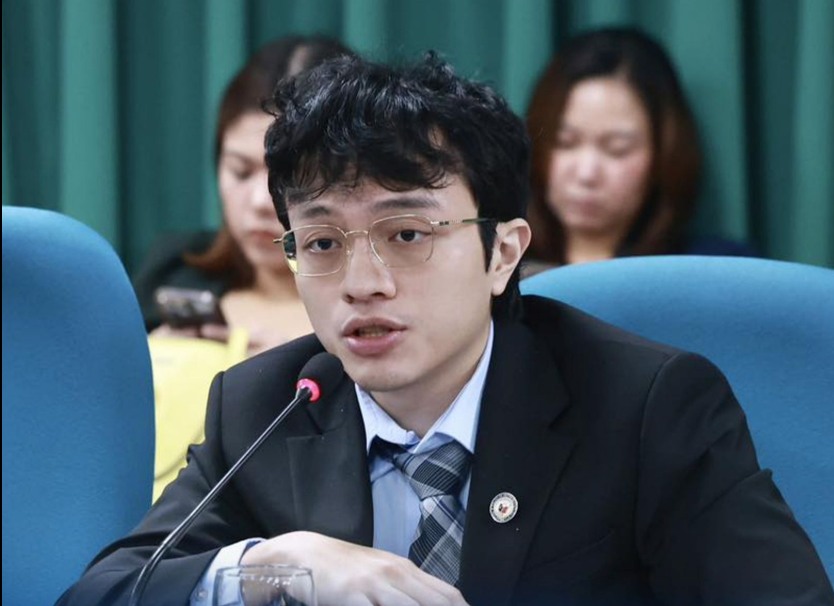By Diego Morra
By government’s own estimate, the country has a huge backlog of 36,000 kilometers of farm-to-market roads (FMRs) costing P300-billion and the Marcos Jr. administration, already getting choked by the trillion-peso flood control projects (FCPs) that were either ghost projects, substandard and, worse, repeated projects that wasted taxpayer money but lined the pockets of the conspirators, will be hard put in justifying the P16-billion proposed budget for FMRs for 2026.
At the rate it is going, the flood of documents, admissions against self-interest by Department of Public Works and Highways (DPWH) engineers and discovery that the daughters of Mayor Maglanque of Candaba, Pampanga, resigned DPWH secretary Manuel Bonoan and yet another DPWH official operated a corporation that also cornered big infrastructure projects all shoot down protestations (which actually means affirmations) by Bonoan and other officials that they are not corrupt. If proof is adduced that the office of a controversial lawmaker was the destination of an emissary bringing filthy lucre to the august halls of the Senate, we just hope that not one of his kin will perish.
Politicians are supposed to be crazy but must they be stupid enough to allow bags of cash, which is the body of the crime or corpus delicti, to be brought to the Upper Chamber? This is fiscal impunity, with those responsible believing in the Latin phrase “Tandem vincemus.” It means, in the end we will conquer.” Sa madaling salita, lulusot at lulusot. The Kilusang Magbubukid ng Pilipinas (KMP) revealed that as of August 2025, the verified but unfunded FMR project proposals already amount to P286.54 billion and cover 20,000 kilometers of unbuilt farm roads. The biggest gaps are in Region 11 (Davao Region) with more than 7,000 kilometers worth P65.5 billion and Region 2 (Cagayan Valley) with 2,707 kilometers worth P36.5 billion.
“Taun-taun pinopondohan ng bilyon-bilyon pero hindi natatapos, saan napupunta ang pera? Kailangan malaman at maungkat din kung magkano ang SOPs at kickbacks sa FMRs. Hindi dapat makaligtas ang contractors at mga pulitikong nakikinabang dito,” KMP stressed as it demanded immediate probe into these heavily- funded infrastructure projects. Moreover, what is lewd about the FMR program is that billions are disproportionately poured into political bailiwicks to win unstinting support. For 2026, Ilocos Norte will corner 30% of Region 1’s P1.1-billion FMR budget, while Leyte takes has more than P300 million from Region 8’s P915-million share. “The government must explain how priorities are being set. Why are political strongholds favored over areas where farmers most urgently need roads?” KMP asked. Worse, they end up as farm-to-pocket roads (FPRs.)
Agriculture Secretary Francis Tiu Laurel confirmed that between 12.7% and 15% of palay production (around 450,000 metric tons) and 30% of vegetable output are lost annually due to poor logistics, largely caused by the lack FMRs. “Kung sinasabi ng DA na FMRs ang gulugod ng food security at susi sa pagbaba ng presyo ng pagkain, bakit nila hinahayaan na magpatuloy ang sistema ng korapsyon at kapabayaan?” KMP asked. Farmers said the DA 2026 budget proposal deliberations on Monday must reveal the status of the National FMR Network Plan 2023–2028, jointly implemented by DA, DPWH, Department of Agrarian Reform (DAR), Department of Trade and Industry (DTI), Department of Interior and Local Government (DILG) and Department of Tourism (DOT.) They demanded clarity on how many kilometers have actually been completed, how many projects have been completed and inspected, and whether “ghost roads” exist, similar to ghost FCPs. “Every year that the government fails to close this gap on FMRs means more wasted harvests, higher food prices, and deeper poverty in the countryside. Bawat piso para sa FMR dapat napupunta sa kalsada para sa mga magsasaka at hindi sa bulsa ng pulitiko at kontraktor,” KMP said.
Hopefully, these FMRs will not suffer the same fate as the 13,400 FCPs during the Rodrigo Duterte administration and the more than 8,000 projects “completed” under the current dispensation. Hope springs eternal, as the saying goes, but for KMP, FMRs are synonymous with graft. Like the irrigation projects that should have diligently monitored by the National Irrigation Administration (NIA) but which have traditionally been distributed to the members of the so-called “Magnificent 7” contractors, FPRs end up being undertaken by a gaggle of contractors with close ties to politicians, or with the top bananas at the Department of Agriculture (DA.)
However, bad habits die hard and this year, the continuing crime of plunder might as well be replicated in the proposed P16-billion budget for FMRs in the proposed national budget for next year. Diligent leaders of the Kilusang Magbubukid ng Pilipinas (KMP) revealed on September 12, the eve of Marcos Jr.’s 68th birthday, that government is not expected to reduce the massive backlog of 36,000 kilometers of FMRs costing P300 billion. Spending P16 billion yearly in an efficient manner means the backlog cannot be erased in 20 years, if farmers were truly lucky. But misfortunes hit them regularly like typhoons and 90% of the time, food producers would enjoy substandard roads while well-paved roads led to the vacation houses and the mountain redoubts of legislators.
Out of the official appropriations for each project, 5% goes to value added tax (VAT), 2% to withholding taxes, 1% for bonds and licenses and 1% for materials testing. In short, only 91% is left for the contractor to play around with, and 56% if the 35% commissions are paid to lawmakers, and the 16% to DPWH officials, COA snoops and the DBM guys who sign notices of cash allocations (NCAs). Those in the last layer are lucky enough to get 5% for “parada” or budget parking and hosting of ghost FCPs. Thus, contractors would make do with 35% of the total budget to complete sturdy FCPs. In cahoots with the bad eggs at the DPWH, they will make more money if they indulge in building FCPs in the air, with officials certifying the completion of projects that were never started at ll. Yes, ghost FCPs are the gold standard for graft and they are the reason by big construction companies would never touch FCPs with a 10-foot pole.




